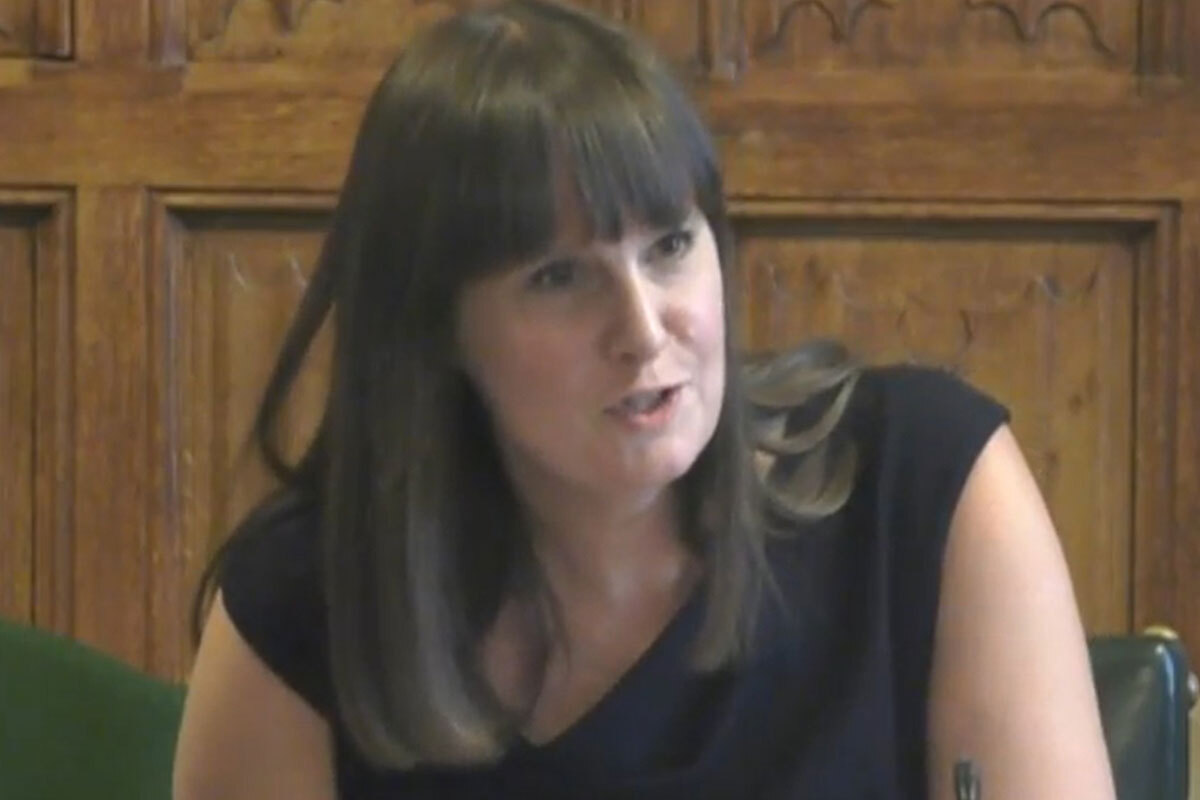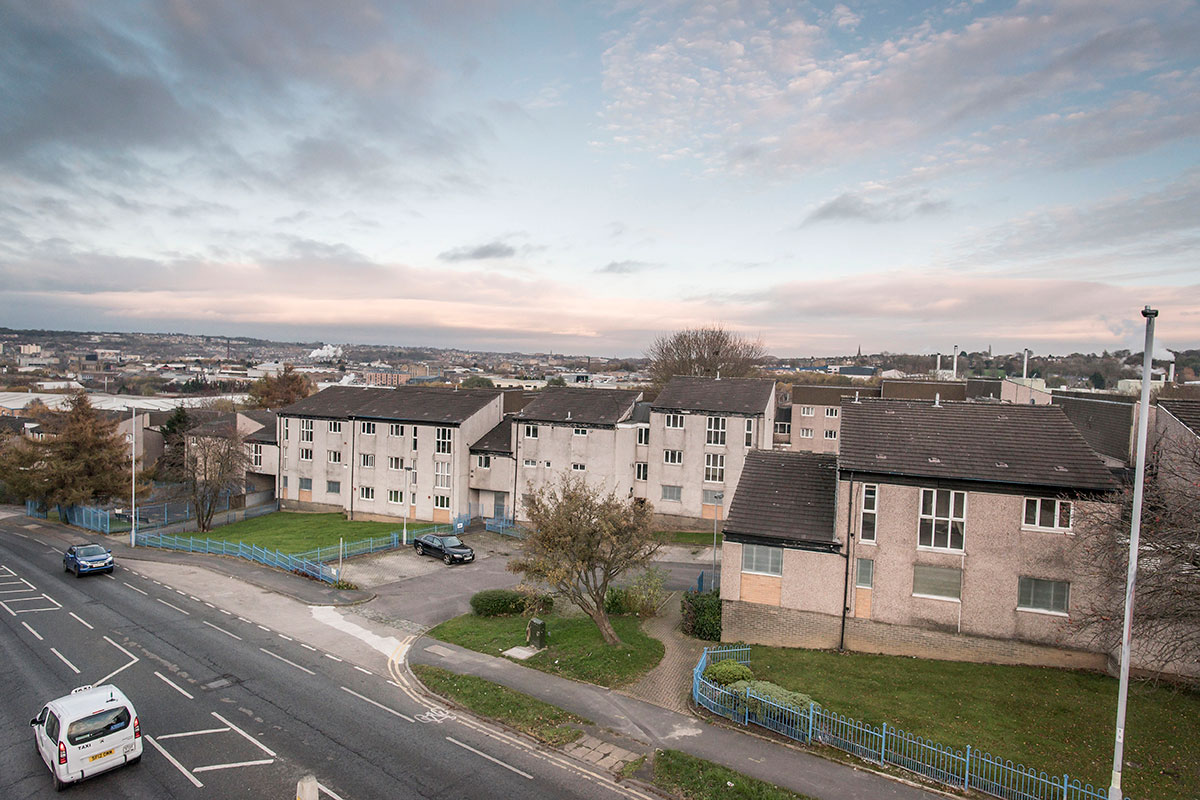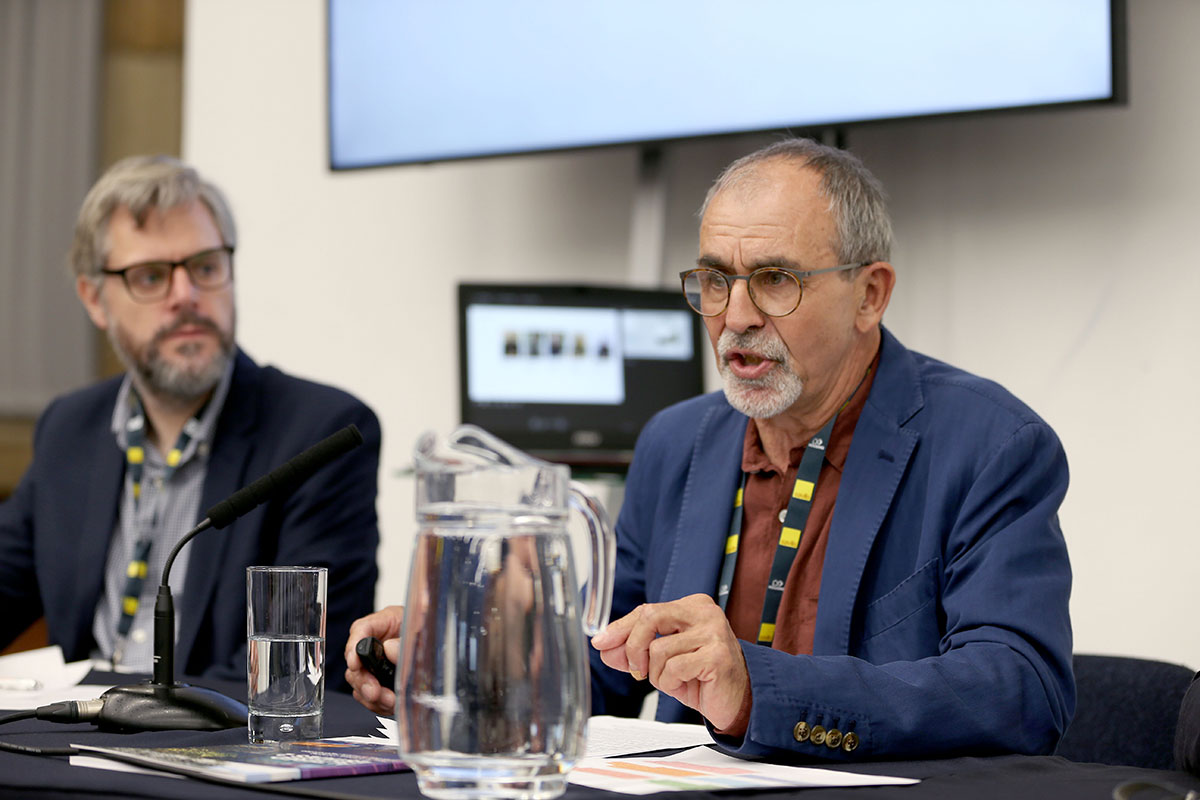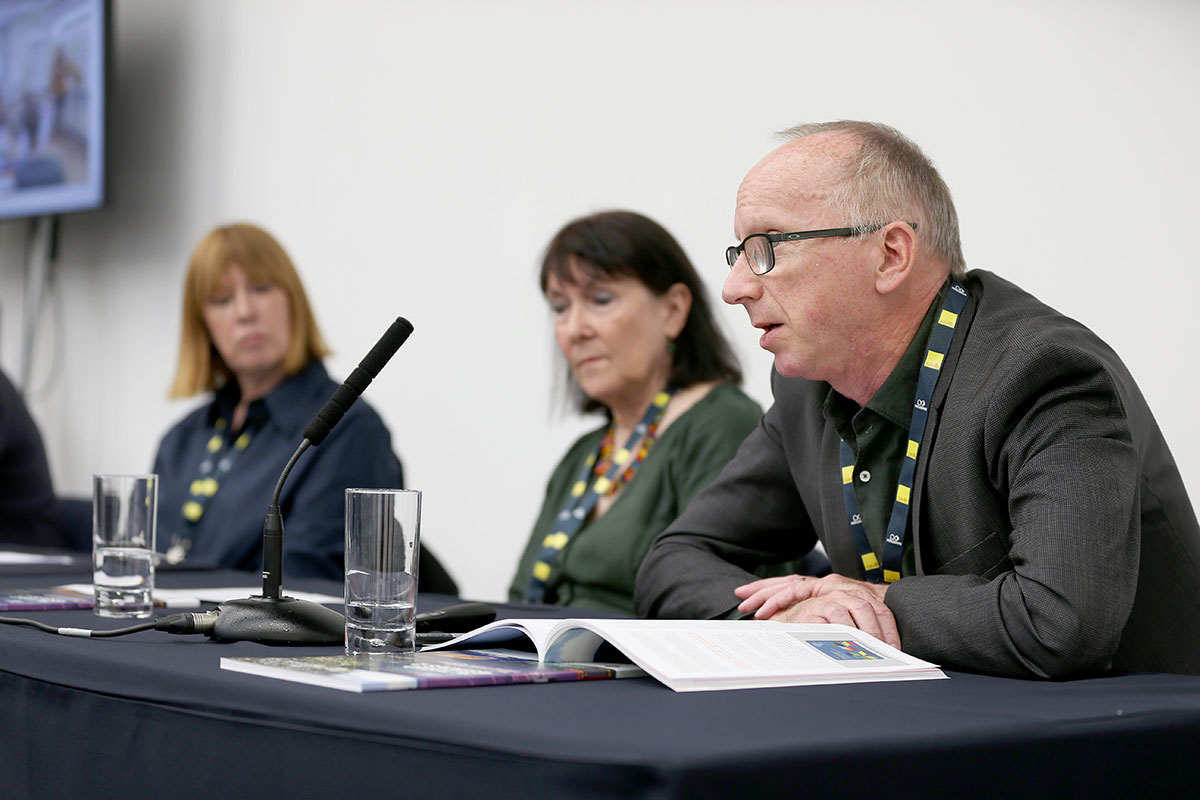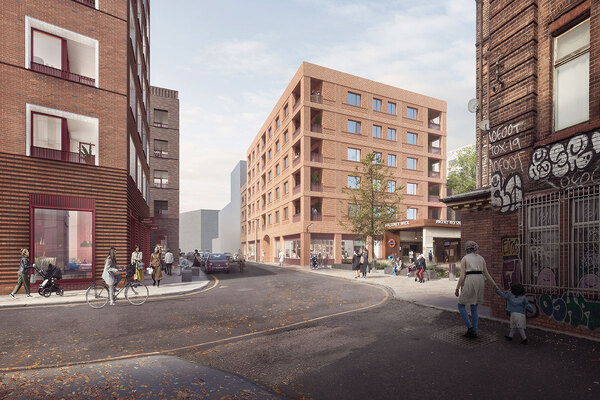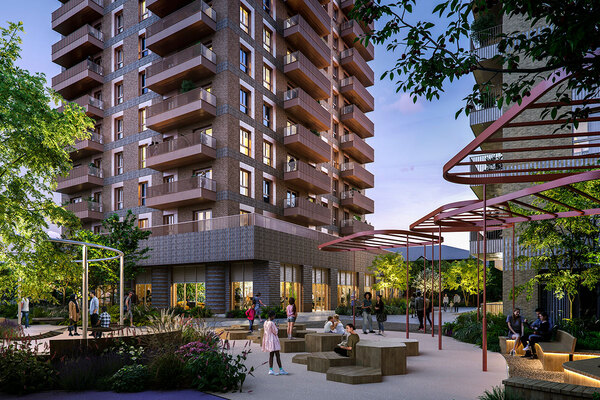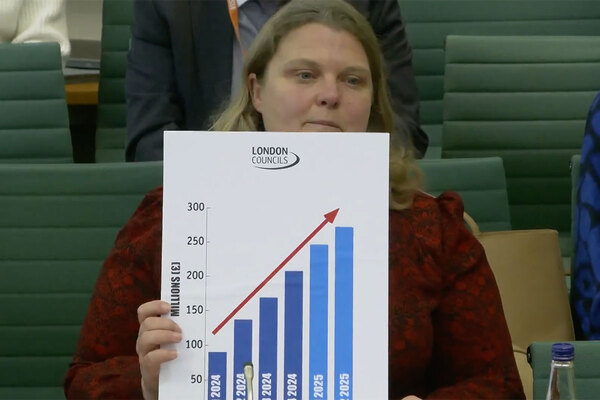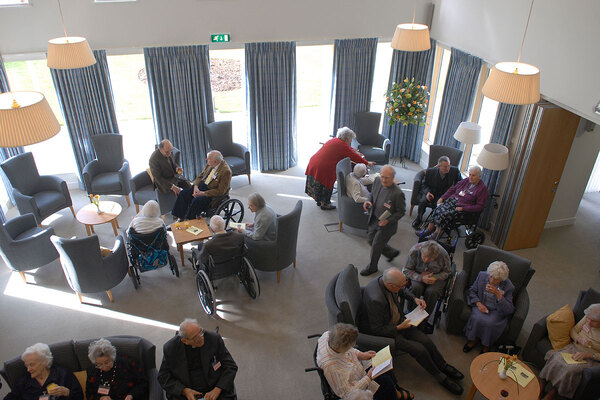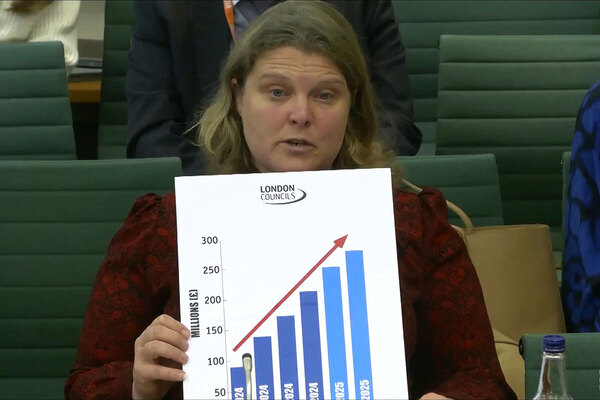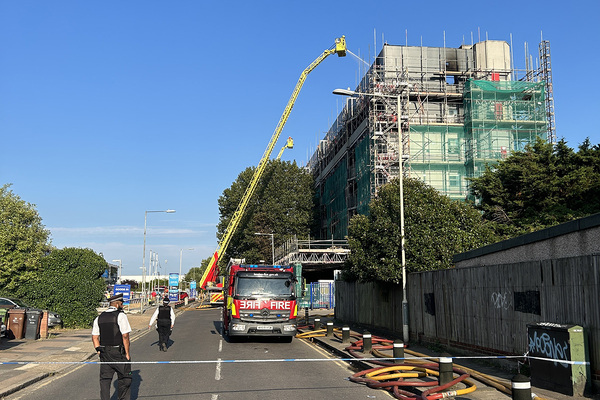The big issues that impact the regeneration and delivery of social housing
Four architecture firms have revisited a landmark report on estate regeneration. Inside Housing has brought them together to discuss what they learned. Photography by Guzelian
In association with:
![]()
Six years ago, a panel of architects and regeneration experts wrote a report on regeneration called Altered Estates. It called for putting the needs of existing communities at the heart of projects and suggested a design approach that would ensure new and regenerated developments would be made to last. A lot has changed since 2016, which is why experts drawn from the organisations that authored the original study have co-written a new report: Altered Estates 2.
“The past six years have been probably the most dramatic and [included] the greatest changes, certainly that I’ve seen in my career, and are a really interesting context in which this new report has been written,” says Andy von Bradsky, a consultant and former head of architecture at what was then the Ministry of Housing, Communities and Local Government.
“Funding delivery, community involvement, quality, net zero – these are big issues that really have an impact on what we do with estate regeneration in the future. The report addresses these full on; it gives you a really good insight into what the challenges are for practices dealing with estate regeneration at the moment.”
“The past six years have been probably the most dramatic and [included] the greatest changes, certainly that I’ve seen in my career”
To mark the launch of Altered Estates 2, Inside Housing brought the report’s authors together to discuss its four major themes in a panel event sponsored by the architecture firms for which the authors work: HTA, Levitt Bernstein, Pollard Thomas Edwards and PRP.
“[The themes] include how regeneration can be delivered responsibly and how residents should be involved; what funding needs to be available to the sector to improve the standard of housing for modern living; what strategies housing providers need to have in place for considering climate change targets… and how regeneration projects can support the delivery of social housing,” says Martin Hilditch, the panel’s chair and editor of Inside Housing.
What does social housing offer neighbourhoods? And how can regeneration projects support this?
Estate regeneration is about creating social value, argues Barry McCullough, director at Levitt Bernstein, but since social value can be tricky to measure, it often does not carry the same weight as financial value or viability. One way to make it measurable, he says, would be for clients to set a ‘social value brief’ at the start of a project.
“That allows you to then measure baseline data [before work starts]… and then to measure during and after,” Mr McCullough explains. “It then becomes a quantifiable set of information which can be balanced against financial viability, housing numbers and all the other things. It becomes measurable. So we’d really like to encourage the idea that social value briefs are set from the beginning.”
“Unsurprisingly, estate regeneration is a scary idea for residents, so talking to them as early as possible is a really beneficial thing to do”
To add value to communities, and ensure schemes are sustainable in the long term, developers need to provide affordable local services alongside the affordable homes, says Tricia Patel, a partner at Pollard Thomas Edwards.
“That could be [achieved] through creative business tenancies, or the provision of shared community spaces,” she says. “This is a real challenge for many major regeneration programmes. They need to plan for a sustainable balance of existing and new residents, and to avoid marginalising existing communities.”
How can regeneration be delivered responsibly and with the inclusion of residents?
A conversation with residents should be initiated as early in the process as possible, states Mr McCullough. “It sets an agenda and gets into residents’ minds the possibility that their estates might be suitable for, or likely to be, regenerated in some way,” he adds. “Unsurprisingly, estate regeneration is a scary idea for residents, so talking to them as early as possible is a really beneficial thing to do. I can’t emphasise that enough.”
This is easier these days, says Ms Patel. “The rise of digital engagement during lockdown has had a real upside. I was sceptical, but I’m now a fan,” she says.
“It’s not going to replace in-person [conversations], but it’s another hugely valuable tool. It’s all about the widest engagement possible. And whatever methods we use, it’s got to be clear, it’s got to be understandable, and it’s got to be enjoyable.”
What funding needs to be available to the sector to improve the standard of housing for modern living?
The concept of levelling up is now a part of our national conversation, and regeneration has an important role to play. But it is going to need investment.
“There’s a clear need for additional funding for estate regeneration, especially beyond London and the South East where land values, generally speaking, help make the cost plans required,” says Brendan Kilpatrick, senior partner at PRP. “But beyond that, and as part of the levelling-up agenda, there definitely needs to be more funding that allows estate regeneration to occur on a more even basis across the country.”
“Earlier this year, VAT was omitted on solar panels, insulation and heat pumps for the next five years only. We don’t think this goes far enough”
Funding is key, agrees Caroline Dove, a project director and partner at HTA, but existing programmes are often short term and hampered by bureaucracy. “There should be a comprehensive funding programme which runs for a minimum of a decade,” she says. “So the industry has a chance to develop and scale up its supply chain.”
As well as funding, she adds, scrapping VAT would be another step in the right direction. “Earlier this year, VAT was omitted on solar panels, insulation and heat pumps for the next five years only. We don’t think this goes far enough,” Ms Dove says. “And there shouldn’t be VAT on any renovation work.”
What strategies do social landlords need to have in place for considering climate change targets?
Which is more sustainable: renovating a home or replacing it? The answer is always important, but it is not always clear. Retrofitting a home is seen as the lower-carbon option, argues Ms Dove, but that depends on the property’s long-term potential. What developers need is a new framework, she adds, which could be used to appraise existing homes and compare the benefits of retaining them versus replacing them.
“This could include factors such as location, proximity to transport and facilities, spatial characteristics, adaptability, accessibility, private and community space, and the ability to mitigate physical issues such as noise, flood risk and air quality,” she explains. “If these are suitable buildings in the right place, can they be renovated to significantly improve energy performance without having to move residents out? If you have to disrupt families or older people, they might be better off moving straight into a new home.”
Sign up for our development and finance newsletter
Already have an account? Click here to manage your newsletters

